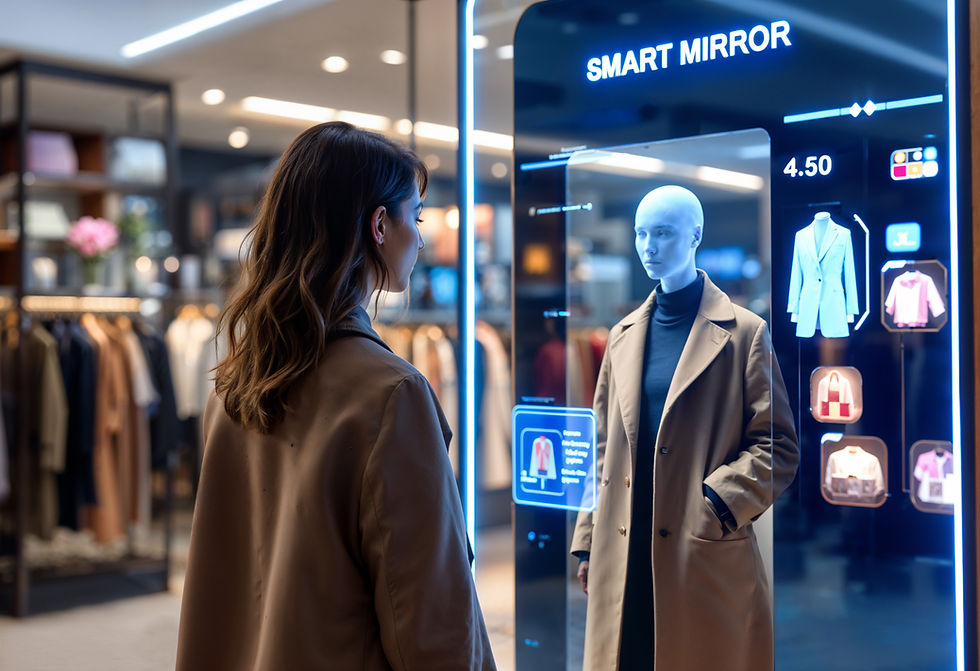Digital Twins reimagined: From Standalone Assets to the Enterprise Metaverse
- Team Uniquon

- 29 ago
- Tempo di lettura: 3 min
Aggiornamento: 4 set

Beyond the Digital Twin, towards a Living Enterprise Model
The concept of the digital twin has already proven its strategic value across key sectors such as manufacturing, energy, logistics, and healthcare. Traditionally, it referred to a faithful digital representation of a physical asset—be it a machine, a production line, a building, or even a city infrastructure. Its purpose was clear: to monitor, predict, and optimise.
Today, however, we are witnessing a significant shift in scale and ambition. Technological advancements—driven by artificial intelligence, advanced sensor networks, edge computing, and immersive environments—are transforming the digital twin from a single-object replica into a fully connected system. The focus is no longer on duplicating individual assets, but rather on digitally representing entire processes, organisational flows, and even the dynamic architecture of a company as a whole.
This convergence leads us to a new operational horizon: the enterprise metaverse.
The Enterprise Metaverse as an Operational Environment
In a business context, the metaverse should not be mistaken for a recreational or social digital replica. Rather, it is a dynamic, interoperable, and immersive operational environment designed to visualise and manage the complex inner workings of an enterprise in real time.
Unlike isolated digital twins, the enterprise metaverse integrates digital replicas of physical assets, production processes, human interactions, supply chains, IT infrastructures, and decision-making logic. All of this is orchestrated within a three-dimensional digital context, enriched by real-time data streams, predictive models, and advanced simulation capabilities.
The power of this evolution lies in its ability to anticipate future scenarios, rather than merely describing the present. Decisions can now be tested within high-fidelity, virtual simulations, allowing leaders to assess impacts, trade-offs, and systemic implications before taking real-world action.
Towards an Integrated Digital Ecosystem
This transformation extends well beyond technology—it affects organisational structures and cultural mindsets. Enterprises adopting an integrated approach to digital twins are evolving into intelligent digital ecosystems, where data is no longer used for static reporting but instead becomes the lifeblood of adaptive, interactive, and continuously evolving environments.
In manufacturing, for instance, every machine, production line, and logistics system is synchronised with its digital counterpart, enabling proactive interventions, continuous optimisation, and real-time simulation of complex scenarios. In urban contexts, city-scale digital twins are enabling smarter governance of mobility, energy, and public services. In healthcare, the interconnection between digital twins of devices, clinical environments, and patients is paving the way for predictive and personalised medicine.
In this light, the enterprise metaverse becomes a holistic platform, seamlessly merging physical and digital operations into a single, transparent and adaptive loop.
Strategic and Technical Implications
For the executive leadership team, this transition represents a profound shift in how decisions are approached. Embracing the enterprise metaverse means adopting a radically data-driven operating model, where strategic decisions are validated through digital simulation before implementation.
From a technical perspective, implementation requires distributed architectures, interoperable platforms, real-time data orchestration, embedded security, and advanced AI models. The interconnection of heterogeneous systems—legacy, cloud, and edge—is a critical enabler, as is the development of immersive interfaces that make data not only accessible but also experientially intuitive.
Equally important is governance. The quality, lineage, and protection of data are as critical as the reliability of the simulations. In this context, open standards and shared frameworks are emerging as key levers to scale these models beyond departmental silos and across the enterprise.
Shaping the Future of Business
The shift from digital twins to the enterprise metaverse is not theoretical—it is already being pursued by forward-thinking organisations across the most innovative industries. Competitive advantage is no longer defined solely by how quickly one can respond to disruption, but by the ability to shape the operational context itself—through continuous simulation, predictive insight, and immersive collaboration.
At Uniquon, we recognise this evolution as one of the most powerful enablers of systemic digital transformation. Our mission is to support enterprises in designing and implementing intelligent, scalable, and secure digital environments—enabling measurable value across the entire decision-making chain.



